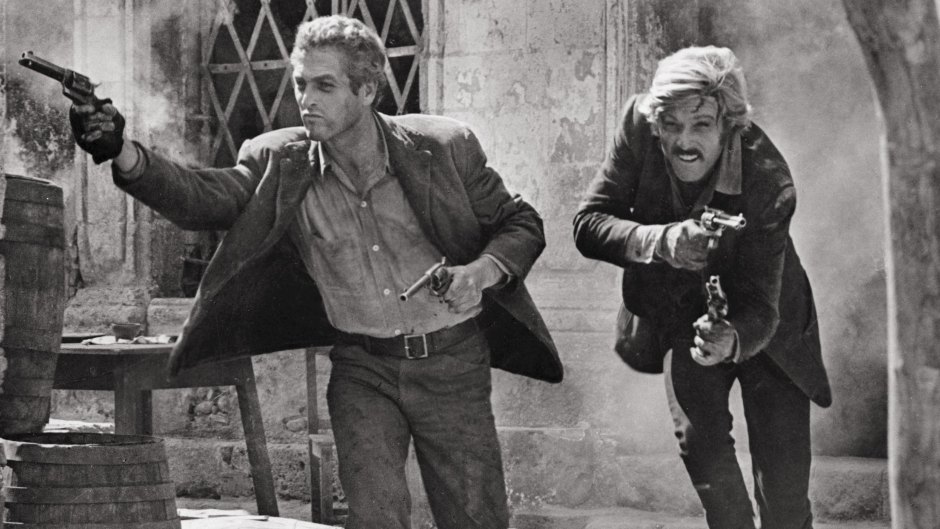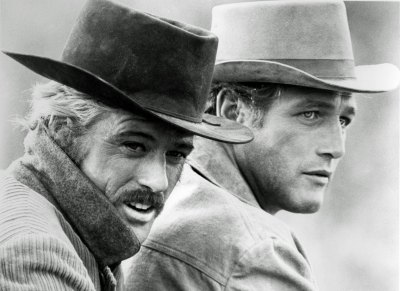
20th Century Fox/Campanile Productions/Newman-Foreman Company/Kobal/Shutterstock
How Paul Newman and Robert Redford Hit Box Office Gold With ‘Butch Cassidy and the Sundance Kid’
The legendary screen partnership of Paul Newman and Robert Redford almost got shot down before it ever began. Paul was a superstar who’d earned Oscar nods for Cat on a Hot Tin Roof, The Hustler, Hud and Cool Hand Luke when he was cast as the easy-going Butch in 1969’s Butch Cassidy and the Sundance Kid.
But finding his bromantic partner proved trickier. Steve McQueen, Marlon Brando and Warren Beatty were considered, but Paul (urged by his wife Joanne Woodward) fought for Robert — a relative unknown who was considered a lightweight — to play the hot-tempered Sundance Kid.

“I had done a few films but nothing substantial,” Robert, then best known for the Neil Simon rom-com Barefoot in the Park, reveals in the latest issue of Closer Weekly, on newsstands now. “The studio was against my being in the film, because they didn’t feel like they had someone to match up with Paul of equal name value.”
But Paul pushed for Robert, and director George Roy Hill was in his corner. “Robert’s an independent, hard-nosed man who pretty much goes his own way,” Hill, who died in 2002, once said. “Those were qualities that worked well for Sundance.”
The partnership paid off. The chemistry between Paul and Robert translated like gangbusters. “When you can put that kind of bonding and connection on film in a very real, warm and entertaining way, it has a lot of currency,” says Robert.

Katharine Ross, who was cast as Sundance’s love interest, schoolteacher Etta Place, didn’t fit in so easily. “My communication with her was the least good of any of the actors,” said Hill, who admitted he only cast The Graduate alum because “she was the sexiest girl I’d ever seen.”
Yet Hill became annoyed when cinematographer Conrad Hall, who was dating Katharine in real life, let her operate one of the cameras in a scene. Katharine was banned from the set except when she was required to be on camera for a scene.
“I had this fantasy of becoming the first woman in the camera union,” Katharine once recalled. “But, evidently, this was upsetting to several people, including the director.” Ultimately, Katharine and Hall split, and she ended up marrying Sam Elliott, an extra in the movie whom she didn’t meet until after shooting wrapped.
Along with Easy Rider and The Wild Bunch, Butch Cassidy and the Sundance Kid was part of a wave of counterculture 1969 films that turned rebels and outlaws into heroes. Even though Butch and Sundance are gunned down at the end, the film had a lighter tone, thanks in part to Burt Bacharach’s jaunty score, including the hit single “Raindrops Keep Falling on My Head.”

“We didn’t want a traditional Western score,” Hill explained. “The picture was designed for a contemporary feel. The characters are modern rather than traditional.” Adds Robert, “To us, it was synonymous with romance and free spirit.”
Butch Cassidy and the Sundance Kid became 1969’s No. 1 film, grossing $102 million, more than doubling its closest competitor, Midnight Cowboy. The actors re-teamed with Hill for 1973’s Oscar-winning con-men smash The Sting. But Butch and Sundance always held a special place in their hearts.
Paul loved it so much, he named his camp for sick kids after the gunslingers’ Hole in the Wall Gang. Robert, who played another outlaw in last year’s The Old Man and the Gun, put the Sundance moniker on his fiercely independent film festival. Until Paul’s death at 83 in 2008, the actors “were extraordinarily close friends,” said Hill. “It lasted all their lives.”
For more on your favorite stars, pick up the latest issue of Closer Weekly, on newsstands now — and be sure to sign up for our newsletter for more exclusive news!








































